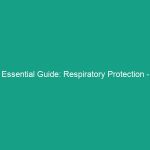Good Morning Team!
Today, we’re going to discuss a crucial aspect of our daily operations: double-checking critical tasks. This practice is essential in minimizing human error risks and ensuring a safe and efficient workplace. As you know, mistakes can happen, but by implementing double-checking strategies, we can significantly reduce the likelihood of errors that could lead to accidents or operational setbacks.
Understanding Double-Checking Critical Tasks
So, what exactly does double-checking critical tasks mean? In simple terms, it involves reviewing an action or process twice to confirm its accuracy before finalizing it. This is particularly important in high-stakes environments where the consequences of errors can be severe.
The importance of double-checking cannot be overstated. It affects not only our Safety but also our productivity and efficiency. For instance, if a Safety procedure is overlooked, it could lead to accidents that impact employee well-being and company reputation. One common misconception is that double-checking is a sign of weakness or inefficiency; rather, it is a proactive measure that reinforces our commitment to safety and quality.
Key Hazards, Risks, and Safety Considerations
Neglecting to double-check critical tasks can lead to various Hazards and risks, including:
- Increased Accident Rates: Errors can cause injuries to employees and damage to equipment.
- Regulatory Non-Compliance: Failing to adhere to safety protocols can result in fines and legal repercussions.
- Operational Delays: Mistakes can lead to rework, affecting project timelines and overall productivity.
In real-world scenarios, there have been numerous incidents where lack of double-checking has resulted in severe consequences. For example, a construction site might experience a collapse due to incorrect load calculations, highlighting the critical need for thorough verification.
Best Practices, Procedures, & Actionable Advice
To effectively double-check critical tasks, here are some Best Practices that you should follow:
- Develop a Checklist: Create a detailed checklist for tasks that require double-checking. This ensures that no step is overlooked.
- Use Standard Operating Procedures (SOPs): Incorporate double-checking into your SOPs. Clearly outline the steps for verification.
- Engage a Peer Review: Whenever possible, have a colleague review your work. Two sets of eyes are better than one.
- Take Breaks: Fatigue can lead to oversight. Taking short breaks can help recharge your focus before double-checking.
- Utilize Technology: Use tools and software that help automate checks and reduce manual errors.
Let’s consider a brief case study: A manufacturing company faced repeated defects in their product line due to overlooked quality checks. By implementing a robust double-checking protocol, including peer reviews and digital checklists, they reduced their error rate by 40% within six months.
Regulations, Standards, and Compliance
Understanding the Regulations and Standards relevant to double-checking critical tasks is paramount. Compliance with OSHA regulations, ISO standards, and company-specific policies not only safeguards employees but also enhances the company’s credibility.
For instance, osha mandates that employers provide a safe work Environment, which includes following proper safety protocols. By adhering to these regulations through diligent double-checking, we protect our workforce and our business from penalties.
Employee Engagement & Discussion
Let’s engage in a discussion. Think about your daily tasks: What safety challenges have you encountered related to double-checking? Are there instances where a double-check could have made a difference? Sharing these experiences can help us learn from one another and improve our practices.
Conclusion & Key Takeaways
To wrap up, double-checking critical tasks is a vital practice that can significantly reduce human error risks in the workplace. By implementing effective strategies like checklists, peer reviews, and adherence to safety standards, we can enhance our safety culture and operational efficiency.
Remember, prioritizing safety is not just a responsibility; it’s an integral part of our work ethic. Thank you for your attention today, and let’s commit to making double-checking a routine part of our operations!


